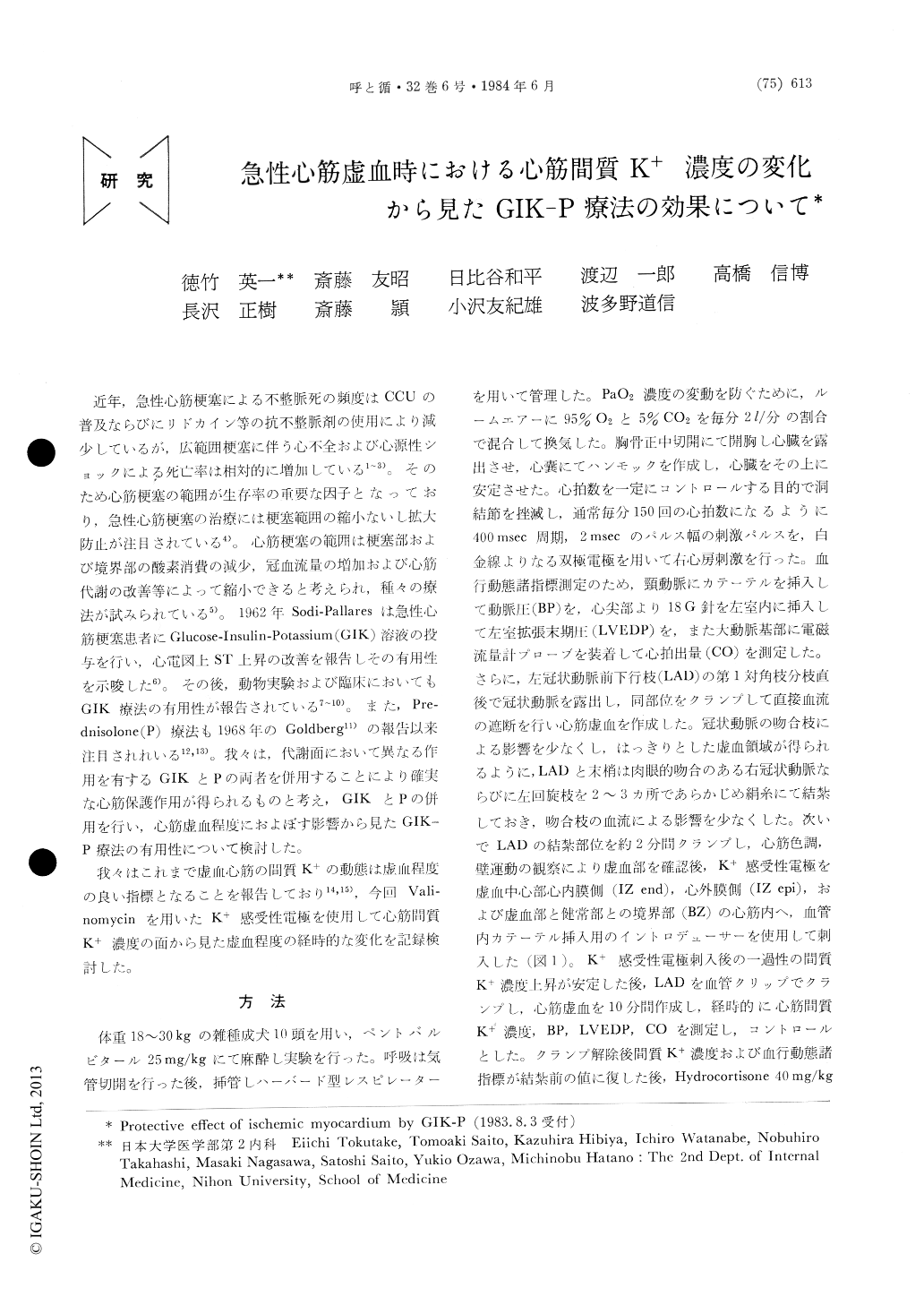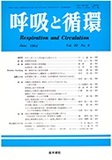Japanese
English
- 有料閲覧
- Abstract 文献概要
- 1ページ目 Look Inside
近年,急性心筋梗塞による不整脈死の頻度はCCUの普及ならびにリドカイン等の抗不整脈剤の使用により減少しているが,広範囲梗塞に伴う心不全および心源性ショックによる死亡率は相対的に増加している1〜3)。そのため心筋梗塞の範囲が生存率の重要な因子となっており,急性心筋梗塞の治療には梗塞範囲の縮小ないし拡大防止が注目されている4)。心筋梗塞の範囲は梗塞部および境界部の酸素消費の減少,冠血流量の増加および心筋代謝の改善等によって縮小できると考えられ,種々の療法が試みられている5)。1962年Sodi-Pallaresは急性心筋梗塞患者にGlucosc-Insulin-Potassium (GIK)溶液の投与を行い,心電図上ST上昇の改善を報告しその有用性を示唆した6)。その後,動物実験および臨床においてもGIK療法の有用性が報告されている7〜10)。また,Pre—dnisolone (P)療法も1968年のGoldberg11)の報告以来注目されれいる12,13)。我々は,代謝面において異なる作用を有するGIKとPの両者を併用することにより確実な心筋保護作用が得られるものと考え,GIKとPの併用を行い,心筋虚血程度におよぼす影響から見たGIK—P療法の有用性について検討した。
我々はこれまで虚血心筋の間質K+の動態は虚血程度の良い指標となることを報告しており14,15),今回Vali—nomycinを用いたK+感受性電極を使用して心筋間質K+濃度の面から見た虚血程度の経時的な変化を記録検討した。
The majority of in-hospital deaths from acute myocardial infarction occur as a result of the pump failure which results from extensive loss of myocar-diurn. Thus, the protection of myocardium may improve the prognosis of acute myocardial infarc-tion. The protective effects of both Glucose-Insulin-Potassium (GIK) and Prednisolone (P) on the ischemic myocardium are reported by several in-vestigators, although the effects of each drug are still controversial. The combination therapy of GIK and Hydrocortisone is scarcely reported, and might have potent protective effects on ischemic myocardium.
Studies were carried out in 10 mongrel dogs. Left anterior descending artery was ligated for 10 minutes as a control occlusion. Interstitial K+ con-centrations of ischemic zone and border zone were monitored with valinomycin K+ sensitive electrodes, and hemodynamic parameters (CO, BP, and LVEDP) were also monitored. GIK (glucose 40g, Insulin 12u, K 10mEq/dl) infusion and hydrocortisone (40mg/kg) injection were made 1 hour before test occlusion. Interstitial K+ concen-tration and hemodynamic parameters were moni-tored as a test occlusion, and compared to a control occlusion. Results were as follows, GIK-P slowed the time course of K+ rise and decreased, peak value from 8.6±0.9mM to 8.1±0.6mM in the ischemic cndocardium significantly and from 4.6+ 0.1mM to 4.2±0.1 mM in the border zone signifi-cantly. Hemodynamic parameters did not change significantly.
In conclusion, GIK-P decreased the rate of rise of interstitial K+ and the maximum value of inter-stitial K+, which was more significant in the border zone without influencing hemodynamic parame-ters. Thus, GIK-P therapy have protective effects on the ischemic myocardium and might be ben-eficial for treating patients with acute myocardial infarction.

Copyright © 1984, Igaku-Shoin Ltd. All rights reserved.


